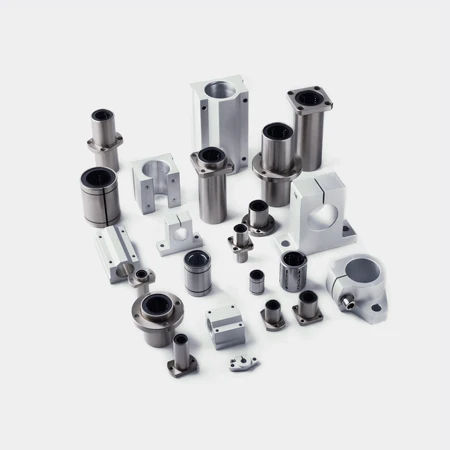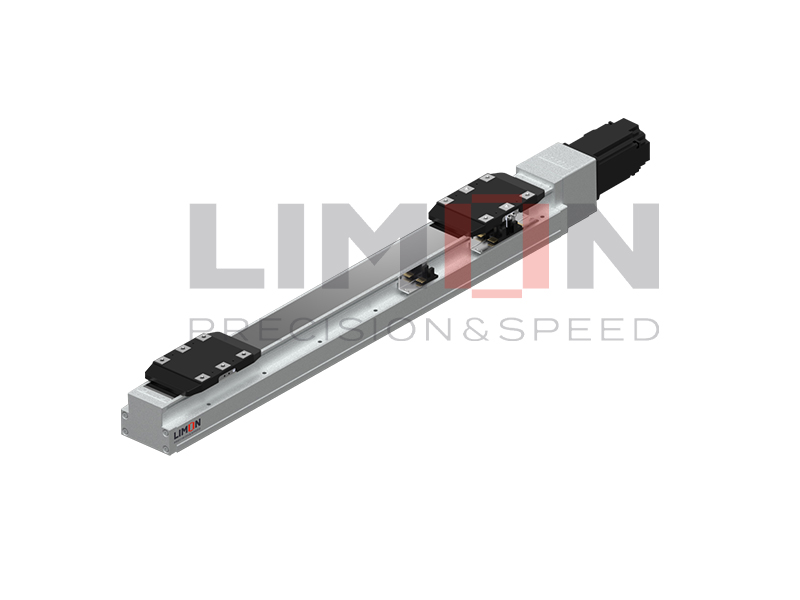Incorrect motion component selection leads to premature wear, noise, and system failure. Understanding when to use bushings vs. bearings prevents costly downtime and boosts performance. Let’s explore the differences.
Bushings and bearings are both used to support motion and reduce friction between moving parts. Choosing the right component depends on load, speed, alignment, environment, and maintenance preferences.
Keep reading to make the right choice for your application.
Bushings vs. Bearings: A Comparison
Bushings and bearings are both friction-reducing components, but they differ significantly in structure, function, and application. Understanding these differences is essential for selecting the right part.
Bushings—also called plain bearings or sleeve bearings—are simple mechanical components that allow sliding motion between two surfaces. They do not contain rolling elements and typically use materials like bronze, plastic, or composites to provide low-friction contact.
Bearings, on the other hand, often include rolling elements such as balls or rollers. This allows for much lower friction and higher speed capabilities. Common types include ball bearings and roller bearings, which are essential for rotational or oscillating applications.
Key distinctions include:
Friction: Bearings provide lower friction due to rolling elements, while bushings rely on sliding contact.
Complexity: Bushings are mechanically simpler, often just a sleeve or liner, whereas bearings have internal races and rolling bodies.
Load handling: Bushings are better suited for heavy, static, or low-speed loads, while bearings excel in dynamic, high-speed, or rotational settings.
Bushings vs. Bearings: Key Factors Comparison
| Factor | Bushings | Bearings |
|---|---|---|
| Motion Type | Sliding motion (surface contact) | Rolling motion (balls or rollers) |
| Load Capacity | High static and shock load capacity | Better for dynamic and rotating loads |
| Speed Capability | Suitable for low to moderate speeds | Ideal for high-speed applications |
| Friction | Higher friction; may require lubrication | Very low friction due to rolling contact |
| Maintenance | Often self-lubricating; minimal maintenance | Requires regular lubrication or sealed versions |
| Environmental Suitability | Better in dusty, wet, or dirty environments | Performs best in clean, controlled environments |
| Alignment Tolerance | Handles shaft misalignment better | Requires precise alignment for optimal performance |
| Material Options | Bronze, plastic, composite, PTFE, graphite | Chrome steel, stainless steel, ceramic, hybrid |
| Cost | Lower cost, simpler to manufacture | Higher cost due to complex internal structure |
| Typical Applications | Agriculture, construction, sliding guides, low-speed pivots | CNC machines, electric motors, robotics, high-speed rotating components |
Knowing these core differences helps determine which solution best fits your system’s needs.


Material Properties Differences
The materials used in bushings and bearings greatly influence performance, durability, and compatibility with specific environments.
Bushings Materials:
Bronze: Known for high load capacity and good wear resistance, especially when lubricated.
Plastic (e.g., PTFE, nylon, UHMW): Lightweight, self-lubricating, corrosion-resistant, and suitable for washdown or chemical exposure.
Composite: Layers of metal and polymer or fiber-reinforced plastics combine strength with low-friction properties.
Graphite-impregnated metal: Ideal for high-temperature or dry-running environments due to inherent lubricity.
Bearings Materials:
Chrome Steel: Common in standard ball and roller bearings; offers high hardness and fatigue resistance.
Stainless Steel: Used where corrosion resistance is essential, such as in food processing or medical equipment.
Ceramic: Lightweight, extremely hard, and corrosion-resistant—ideal for high-speed and precision applications.
Hybrid: Combining ceramic balls with steel races to optimize weight, speed, and longevity.
Bushings are more adaptable in harsh or contaminated environments due to their closed, solid design and broad material range. Bearings, while more sensitive to contamination, offer unmatched efficiency in high-speed and precision settings.
When a Bushing Should Be Used Instead of a Bearing?
There are specific conditions where bushings outperform bearings and offer better overall value or reliability. Understanding these scenarios is key to proper component selection.
1. High-Load, Low-Speed Applications
Bushings excel in heavy-duty environments where motion is slow or intermittent. They can withstand shock loads better than many rolling-element bearings without surface fatigue or brinelling.
2. Dirty or Contaminated Environments
Because bushings have no rolling elements or internal cavities, they are less sensitive to dust, dirt, and debris. In mining, agriculture, or construction, bushings outperform bearings in long-term durability.
3. Misalignment Tolerance
Bushings—especially self-aligning types—can handle greater shaft misalignment without compromising function. This makes them suitable for applications where perfect parallelism is hard to maintain.
4. Maintenance-Free Operation
Self-lubricating bushings made from polymer or composite materials eliminate the need for grease fittings or periodic lubrication. This simplifies design and reduces maintenance costs in remote or hard-to-access areas.
5. Cost-Sensitive Projects
Bushings are generally more affordable than bearings, particularly in high-volume production or simple designs. For non-critical motion or pivot joints, they provide a practical and economic solution.
In all these cases, bushings provide a robust, low-maintenance, and cost-effective alternative to bearings.
Key Factors To Consider When Choosing Between Bushings And Bearings
Choosing between bushings and bearings depends on understanding your application’s demands. Here are the most critical factors to evaluate:
1. Load Capacity
Bushings: Handle higher static and shock loads better, especially at lower speeds.
Bearings: Better for dynamic and continuous loads where movement is smooth and consistent.
2. Speed Requirements
Bushings: Best for low to moderate speeds. At high speeds, friction and heat can increase.
Bearings: Designed for high-speed applications thanks to their rolling elements that reduce contact area and friction.
3. Alignment and Mounting Tolerances
Bushings: Tolerate misalignment and imperfect housing fits better.
Bearings: Require precise alignment and shaft concentricity for proper function.
4. Operating Environment
Bushings: Better suited to dirty, abrasive, or high-moisture environments.
Bearings: Require cleaner environments and often protective seals or shields.
5. Maintenance Expectations
Bushings: Many types are self-lubricating and ideal for maintenance-free operation.
Bearings: Require regular lubrication and inspection, unless sealed for life.
6. Size and Space Constraints
Bushings: Compact and lightweight.
Bearings: Often bulkier due to internal rolling components.
Matching your system’s design and performance goals with the right motion element ensures long-term reliability and efficiency.
Choosing the Right Bushings and Bearings
Once you’ve assessed the operating environment, load, and speed requirements, selecting the appropriate bushing or bearing comes down to fine-tuning performance, cost, and lifecycle.
When to Choose Bushings:
Simpler design with fewer parts
Static or oscillating loads
Need for corrosion resistance or non-metallic options
Environments where contamination is unavoidable
Cost efficiency and ease of replacement
Common applications: Agricultural machinery, construction equipment, sliding doors, exercise equipment, food processing lines.
When to Choose Bearings:
High-speed rotation or precision positioning
Minimal friction and high efficiency are needed
Axial and radial load balancing
Extended travel distances or continuous operation
Noise-sensitive or vibration-controlled systems
Common applications: Electric motors, CNC machines, automotive wheels, robotics, fans, medical devices.
Tip: Consult manufacturer load/speed charts and consider shaft surface finish, hardness, and lubrication compatibility. Some designs may even combine bushings and bearings (e.g., hybrid slide assemblies).
Correct component selection optimizes your machinery’s durability, maintenance profile, and energy consumption over its entire service life.
Summary
Choosing between bushings and bearings depends on load, speed, environment, and cost—understanding both ensures the right fit for your application.For further questions please contact [email protected]




